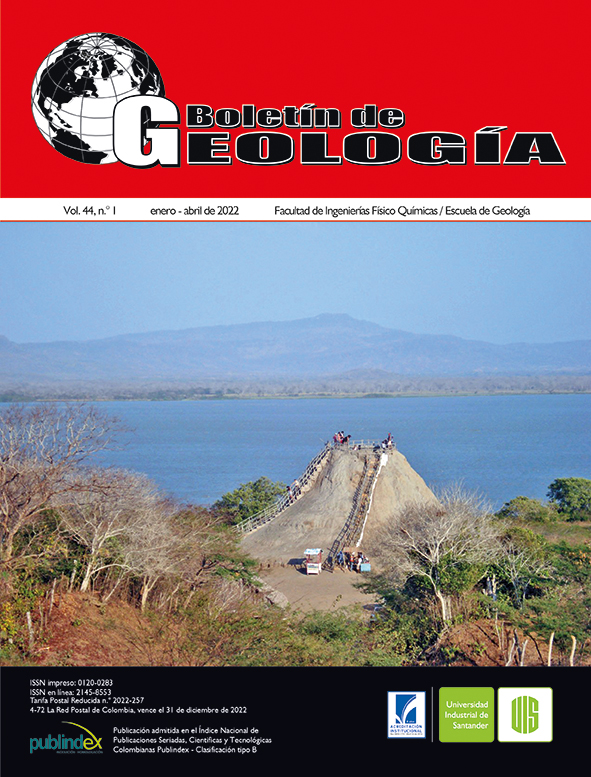Published 2022-01-25
Keywords
- Deconvolution,
- Homomorphic,
- Stochastic,
- Kalman,
- Phase-Inversion
How to Cite
Copyright (c) 2022 Boletín de Geología

This work is licensed under a Creative Commons Attribution 4.0 International License.
Altmetrics
Abstract
Deconvolution attempts compensating for the distortions affecting a recorded seismogram, increasing its bandwidth and extracting subsurface reflectivity from such seismic trace. The estimated reflectivity needs the highest reliability and resolution because of its subsequent use in the pre-stack seismic processing sequence and seismic inversion. We implemented the predictive deconvolution algorithms, the homomorphic Phase Inversion, and the Extended Kalman Filtering. Their application to synthetic traces extracted reflectivity whose comparison with well-bore allowed comparing the reliability between methods. The algorithms applied to an offshore record provided results whose comparison permitted to analyze the impact of the deconvolution assumptions on each method performance.
Downloads
References
- Arya, V.; Holden, H. (1978). Deconvolution of seismic data - an overview. IEEE Transactions on Geoscience Electronics, 16(2), 95-98. https://doi.org/10.1109/TGE.1978.294570
- Claerbout, J. (1985). Fundamentals of seismic data processing: with applications to petroleum prospecting. Blackwell Scientific Publications.
- Crump, N. (1974). A Kalman Filter approach to the deconvolution of seismic signals. Geophysics, 39(1), 1-13. https://doi.org/10.1190/1.1440408
- Deng, X.; Zhang, Z.; Yang, D. (2016). Seismic data deconvolution using Kalman Filter based on a new system model. Geophysics, 81(1), V31-V42. https://doi.org/10.1190/geo2014-0611.1
- Julier, S.; Uhlmann, J. (1997). A new extension of the Kalman Filter to nonlinear systems. SPIE 3068, Signal Processing, Sensor Fusion, and, Target Recognition VI. https://doi.org/10.1117/12.280797
- Jurkevics, A.; Wiggins, R. (1984). A critique of seismic deconvolution methods. Geophysics, 49(12), 2109-2116. https://doi.org/10.1190/1.1441627
- Kalman, R. (1960). A new approach to linear filtering and prediction problems. Journal of Basic Engineering, 82, 35-45. https://doi.org/10.1115/1.3662552
- Lichman, E. (1999). Phase inversion deconvolution for surface consistent processing and multiple attenuation. SEG 69th Annual Meeting Expanded Abstracts. Houston, USA.
- Lichman, E.; Northwood, J. (1995). Phase inversion deconvolution for long and short period multiples attenuation. Geophysical Prospecting, 43(4), 469-486. https://doi.org/10.1111/j.1365-2478.1995.tb00262.x
- Mahalanabis, A.; Prasad, S.; Mohandas, K. (1983). On the application of the fast Kalman algorithm to adaptive deconvolution of seismic data. IEEE Transactions on Geoscience and Remote Sensing, 21(4), 426-433. https://doi.org/10.1109/TGRS.1983.350503
- Robinson, E.A.; Treitel, S. (2000). Geophysical signal analysis. SEG Library. https://doi.org/10.1190/1.9781560802327
- Ulrych, T. (1971). Application of homomorphic deconvolution to seismology. Geophysics, 36(4), 650-660. https://doi.org/10.1190/1.1440202
- Yilmaz, O. (2008). Seismic data processing. Investigations in Geophysics, SEG.
- Ziolkowski, A. (1991). Why don’t we measure seismic signatures? Geophysics, 56(2), 190-201. https://doi.org/10.1190/1.1443031

